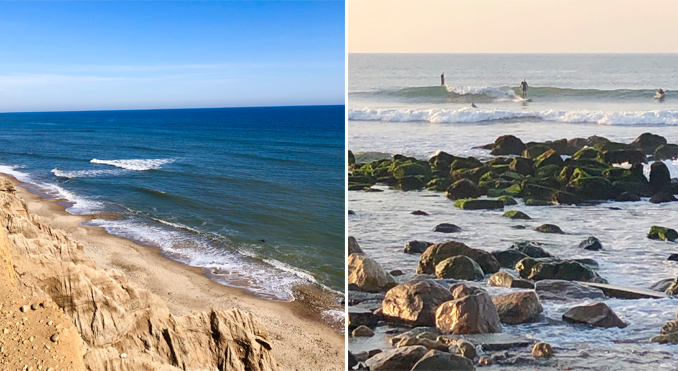
June 2021
What are the Odds?
Like skiing down a mountain, eating raw oysters, or bike riding to the lighthouse, surfing has its built-in joys and potential hazards. If we are participating in any of these activities our goal is to stay safe while having fun. The idea of danger should not stop us, yet it is crucial to be cognizant of what can go wrong in the process, especially when surfing.
We are well aware of the inevitable landmines when surfing; other surfers, rocks, waves, our own board, the jetty, seals and the swell to name a few. As east coast surfers in our pristine piece of the Atlantic, we are less likely to consider the quality of the water in which we are submerged. We know to be careful on some international surf trips and often the west coast, so what are the odds of getting “sick” here?
As it turns out, higher than we think.
Our newfound, collective awareness around being healthy, “staying safe” and being conscious of our environment has skyrocketed this last year, and what is in the water is a consideration as well. An increase in run-off and population around the ocean can result in polluting the water with disease-causing pathogens (organisms) that can affect surfers and swimmers. If ingested, these waterborne illnesses will indeed be a ‘sick’ session in the water.
On land we are being more cautious, but we forget that in the sea we may be susceptible to gastrointestinal illnesses, skin rashes, ear infections, staph infections, meningitis and parasitic illnesses. Not the checklist associated with the joys of surfing. While viruses are the usual culprit behind water-associated diseases, run-off from storm drains and sewage add pesticides, heavy metals, herbicides and other toxic substances that are mixed in at even higher rates over the summer when the population increases.
As surfers and swimmers spend more time in the ocean, ingest more water inadvertently and tend to be submerged more often, we are at greater risk of acquiring something in the sea. Some studies will say there is an increased risk of over 80% (an odds ratio of almost 1.86) of being impacted by waterborne pathogens. So, if you are feeling a bit sick after surfing, chances are its from the water and not some interaction on land. These statistics are also underreported so the odds can be even greater. Advocating for more testing programs to assess and monitor pollutants and viruses would help measure the safety of the water we recreate in. We need initiatives to keep the public safe by ensuing the quality of our water, especially through organizations like Surfrider.
The Surfrider Foundation has Blue Water Task Force Programs (BWTF) that support education, water-testing, alerting the community about hazards and improvement of water quality, led by a mostly volunteer effort. In the meantime, we can do our best to pay attention to warning signs about water quality, swimming in areas with better circulation like the ocean, avoid swimming near pipes or storm water and closely observing the water after a heavy rainfall. The unofficial rule on the west coast has been to avoid the water for a few days after it rains when the water may be teeming with bacteria and urban run-off. Since many signs are not posted, it helps to increase our own awareness, and to communicate to others as best as we can. Maybe then we can lower the odds.

